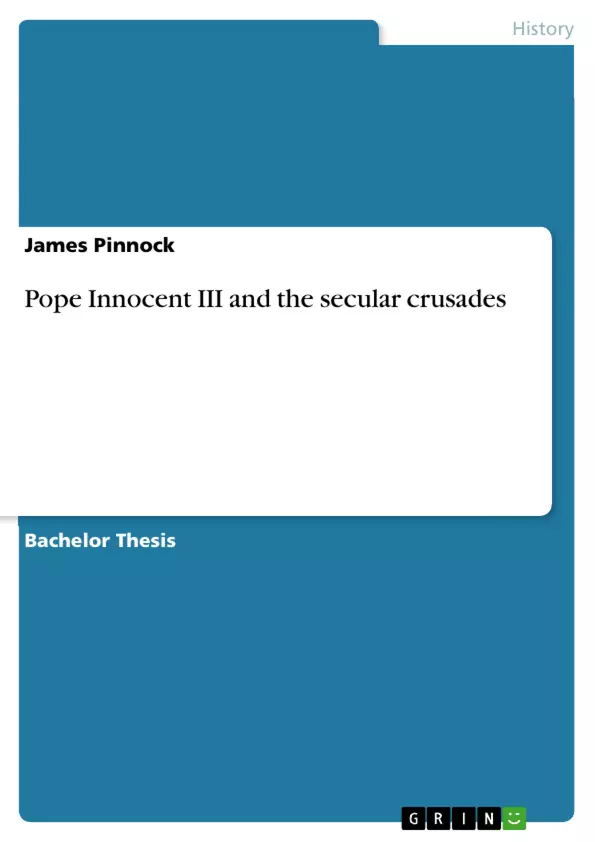Propagated in his papal bull of April 1213, the "Vineam domini sabaoth", is Pope Innocent III's essential conception of, and approach to, his duty as Supreme Pontiff: "Among all the good things which our heart can desire, there are two in this world which we value above all: that is to promote the recovery of the Holy Land and the reform of the universal church".
This bull, summoning the ecclesiastical leaders of Western Christendom to the Fourth Lateran Council, provides an essential background to our examination of "crusade" during the pontificate of Pope Innocent III. It reflects the crucial foundation by which Innocent directed his efforts, and the efforts of his curia, in the years 1198-1216, whereby crusade and crusading achieved a primacy in the formulation of papal policy (unrivalled up this point in the history of the crusading movement), a primacy which was challenged only, but importantly not surpassed, by "the reform of the universal church".
Table of Contents
- INTRODUCTION
- THE FOURTH CRUSADE
- THE ALBIGENSIAN CRUSADE
- INNOCENT III AND THE FOURTH LATERAN COUNCIL
- CONCLUSION
Objectives and Key Themes
This text explores the development of the crusading movement during the papacy of Innocent III, focusing on his vision for the crusade and the challenges he faced in realizing it. It examines how Innocent III attempted to reshape the crusade, codifying its legal and institutional framework, while simultaneously striving for greater papal control over the enterprise.
- Innocent III's vision for the crusade as a central element of Christian society.
- The evolution of crusade doctrine and its institutionalization.
- The tensions between papal control and secular motivations in crusades.
- The secularization of the Fourth Crusade and the Albigensian Crusade.
- The implications of the growing dichotomy between papal theory and secular practice.
Chapter Summaries
- INTRODUCTION: This chapter introduces Innocent III's vision for the crusade as a means to promote the recovery of the Holy Land and reform the Church. It highlights his dedication to the crusading movement and his attempts to integrate it into his wider political strategies.
- THE FOURTH CRUSADE: This chapter examines the Fourth Crusade as an example of the secularization of crusading. It explores how the crusade, initially intended to be a papally-directed enterprise, became dominated by secular contracts and motivations, ultimately leading to the sack of Constantinople.
- THE ALBIGENSIAN CRUSADE: This chapter analyzes the Albigensian Crusade as another example of how secular interests undermined papal control over crusades. It highlights the violence and cruelty that characterized the crusade, highlighting a growing disconnect between papal ideology and the actions of the crusaders.
- INNOCENT III AND THE FOURTH LATERAN COUNCIL: This chapter focuses on Innocent III's efforts to establish a more unified and controlled crusade through the Fourth Lateran Council. It examines the pronouncements and decrees of the Council, showcasing Innocent's attempts to further codify and institutionalize crusading practices.
Keywords
The text centers around the concept of crusade during the pontificate of Innocent III. Key terms include papal theory, secular practice, negotium crucis, Fourth Crusade, Albigensian Crusade, Fourth Lateran Council, and the growing dichotomy between papal control and secular motivations.
- Citar trabajo
- James Pinnock (Autor), 2011, Pope Innocent III and the secular crusades, Múnich, GRIN Verlag, https://www.grin.com/document/413469



